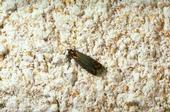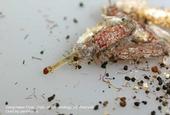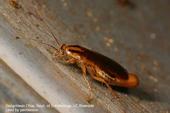
As many people you know have turned to baking during quarantine, it is likely that ingredients such as flour will continue to be in high demand. While you may be tempted to stock up when you find these ingredients, you should also consider how to properly store your ingredients to prevent pests.
Insects can easily be introduced into kitchens and pantries through infested material such as flour, dried fruits, and other grains. These pests can go unnoticed when materials are first brought home because the insects may be present as eggs or larvae. If you are purchasing items like flour or sugar from bulk bins, be sure to store your ingredients to tightly sealed containers at home. This practice can deter
- Author: Elaine Lander

Spring has arrived and with many Californians at home due to local coronavirus directives, now could be an opportune time for some spring cleaning. This annual ritual also has the benefit of preventing and reducing indoor pests.
Cleaning and decluttering removes access to food, water, and shelter for pests such as ants, cockroaches, pantry pests, mice, and
- Author: Elaine Lander

It's often easier to prevent pests before they become a problem than to try and get rid of them once they infest a home. While some pests can be active year-round, cooler temperatures trigger some pests to find shelter indoors.
Creatures such as rats or insects are typically looking for food, water, and shelter. Eliminate or reduce access to these resources to deter pests. There are a variety of tools that are readily available which can help block or limit a pest's entrance into the home. Here are a few suggestions to prevent creatures from stirring in your home this season.
Rats,

Cockroaches, or roaches, are probably some of the least welcome insects people encounter in their homes, kitchens, offices, restaurants, or landscapes. Indoor cockroaches can create significant public health problems by contaminating food and producing allergens.
To help manage both indoor and outdoor cockroaches, UC Cooperative Extension IPM Advisor Andrew Sutherland and UC Riverside entomologists Dong-Hwan Choe and Michael Rust tackle the challenge of cockroach management in the newly revised Pest Notes: Cockroaches.
What's new in this version?
Since it's critical to first identify...
- Author: Andrew Sutherland
- Posted by: Elaine Lander

Two species of Blatta cockroaches can be common peridomestic pests in California, including the familiar oriental cockroach (B. orientalis) and a relative newcomer, the Turkestan cockroach (B. lateralis, Figure 1). Adults of both species are large (usually one inch or more in length) and conspicuous insects that harbor and breed outdoors within moist crevices around structures, such as subsurface utility ports, voids associated with concrete expansion joints, and soil cracks formed at junctions of landscape and hardscape elements (Figure 2).
From these harborage sites, cockroaches venture out at night to feed on a wide variety of...


